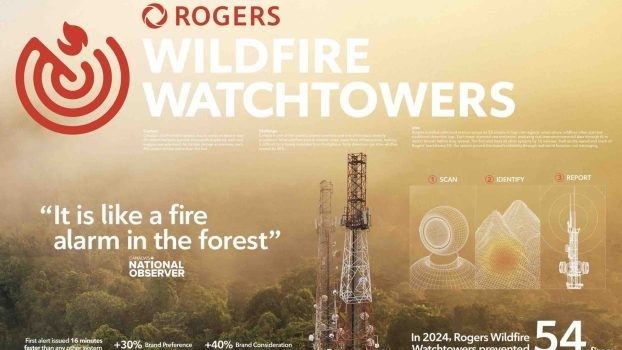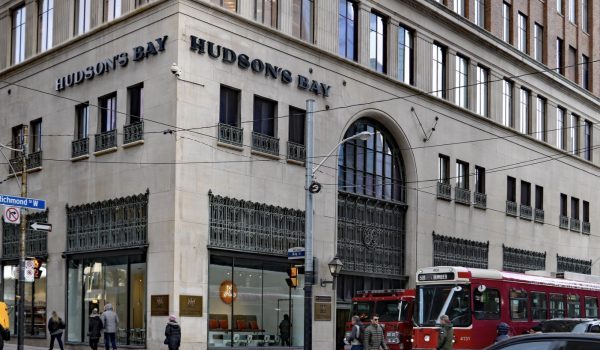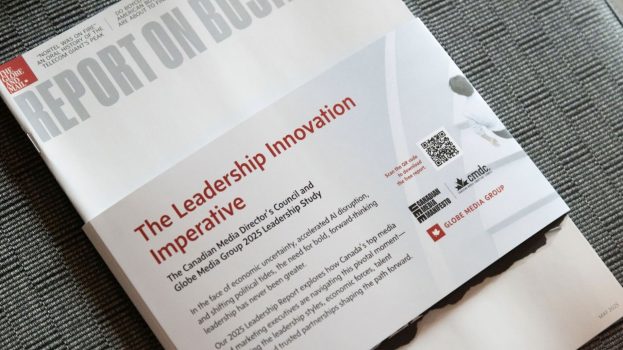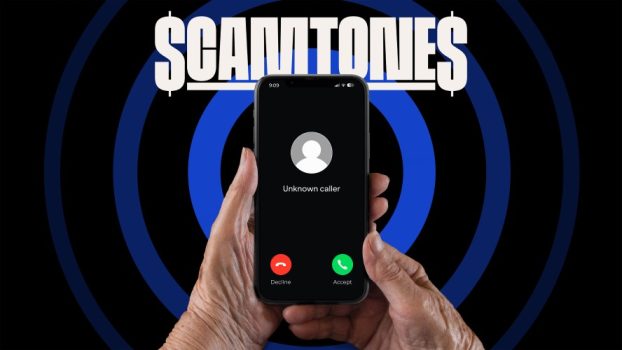Also in this report:
– Playland plays up thrills to woo teens p.21
– Knowing what’s hot is key: Tracking of trends and habits still the best way to target the elusive and fickle youth market, say media buyers and planners p.24
– Sponsors in Master Control: Club to promote show to young viewers allows marketers to extend involvement p.26
– Packaging must speak the language of youth: The best way to understand the visual cues that appeal to the youth market, designers argue, is to immerse oneself in youth culture p.28
Students in Etobicoke, Ont. are videotaping Panasonic events, managing businesses with the help of Apple and Prentice Hall and reviewing Harcourt Brace textbooks – all in the name of education.
That’s because the Etobicoke School Board is one of the leading adherents of corporate-school partnerships, a concept fast gaining currency across North America. Etobicoke currently has 510 corporate programs involving 32 schools, more than any other school board in Canada or the u.s.
Among marketers interested in communicating their messages to youngsters within the school environment, the partnership approach is increasingly viewed as the way to go. But it’s not an easy path to take.
Although government cuts have made schools more open to corporate aid, marketers must tread softly to avoid backlash from educators and parents.
Ian Barrett, community development coordinator for the Etobicoke School Board, says educators want corporate partnerships to be mutually beneficial – and they want the kids to come first.
‘It’s a two-way street,’ he says. ‘We have to help the company’s bottom line without hurting the kids.’
Typical is the deal between the Etobicoke board and Panasonic, whereby high school students use donated equipment to photograph and videotape company events, and the company gets the finished product. Rather than working on a fictional project, says Barrett, the students have the opportunity to take part in a real project from start to finish.
At Etobicoke’s Valleyfield Elementary School, students are involved in the Entrepreneurial Adventure Project. With the help of mentors from Prentice Hall Canada and Apple Canada, they manage a business and bring a product to market. Bank of Montreal branches are involved in the financial aspects of the student businesses.
Elementary school students elsewhere in Etobicoke review textbooks for Harcourt Brace & Company Canada. The youngsters write critical reports on the manuscripts – which the publisher uses to revise the content – and receive the finished versions for free. The children’s names are listed in the books, and they are invited to submit artwork for them as well.
Last year, the Etobicoke board reported $1.5 million in hard-good donations, such as free services and equipment, and $2.4 million in soft-good donations, such as time given by employees so that students have the opportunity to learn a craft or experience the real business world.
For all its enthusiasm about corporate partnerships, Barrett says, the board does set strict limits, and insists that ultimate control must reside with the educators. The schools, for example, won’t sanction curriculum materials plastered with corporate logos.
Sponsored educational materials, of course, have long been used by corporations to communicate to kids in school. But the sophistication of these vehicles is increasing.
This fall, for example, Kraft Canada launched a newsletter for schoolchildren, under its Post brand name, which promotes the importance of nutrition and physical health.
Gillette Canada produces a number of kits for health classes, including ‘Looking Good, Feeling Great,’ a ‘lifestyle management’ course that covers the proper way to shave, explains how antiperspirants and deodorants work and demonstrates the differences between mousse and gel.
Procter & Gamble, meanwhile, offers educational kits on skin care, puberty, self-image and hygiene, which include samples of some of the company’s offerings, such as Clearasil, Noxzema and Always sanitary products. In addition, p&g distributes ‘Decision Earth,’ a booklet on environmental issues created by its u.s. parent, to Canadian schools.
New avenues by which marketers can get their messages in front of schoolchildren are also beginning to open up.
The Ontario Physical and Health Education Association (ophea), for example, is launching a new fitness program that will create opportunities for companies to conduct seminars and sponsor sports events in schools.
And this month, ads will start appearing on school buses in York Region, a suburb of Toronto. Local officials penned a deal to this effect with M2000 Group, a Richmond Hill, Ont. marketing agency, in November.
Newscasts for schoolchildren, complete with commercials, represent yet another vehicle – and a controversial one at that.
The u.s. take on this concept, Channel One, is currently beamed into 40% of that country’s schools. A Canadian version, Youth News Network (ynn) has been on and off the ground for several years now. (At press time, it had yet to enter any schools).
The 12-and-a-half-minute ynn broadcast is supposed to include two minutes of commercials, which has prompted criticisms from parents’ and educators’ organizations alike.
Barrett, for one, says that compelling children to view advertising in the classroom is not education.
Erika Renee Shaker, an education consultant based in Hamilton, Ont. agrees. This kind of programming, she argues, blurs the line between consumerism and education by treating students as buyers rather than learners.
‘The school is an extremely powerful environment,’ Shaker says. And it is precisely that fact that makes any kind of corporate involvement with schools a delicate matter.
Product recognition on school grounds, for example, can make it appear that the school is endorsing the product or company – something that many would find objectionable.























